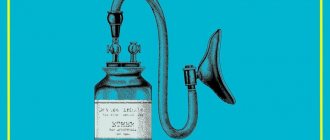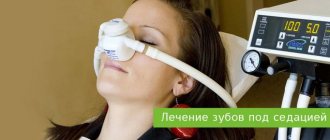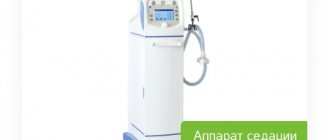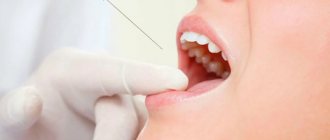November 29, 2021
111
Cosmetology involves performing various procedures that require pain relief. To do this, patients are injected or applied anesthetic drugs. Most solutions used today are non-invasive. In other words, they do not need to be injected under the skin. This is necessary to eliminate any discomfort.
General anesthesia
Anesthesia or general anesthesia is a procedure in which a person is put into a special state - the body does not react to external stimuli, one of which is pain. General anesthesia is performed using anesthetics that act on the central nervous system.
General anesthesia is given if there is a need to perform surgical procedures. The technique has a high level of complexity, so an anesthesiologist accompanies the operation. It calculates the correct dosage for a particular person. The well-being and even the life of the patient depends on it.
As a rule, local anesthesia is often used for aesthetic cosmetology, and anesthesia is done in rare cases, for example, if it is necessary to do deep peeling.
Anesthesia is perceived ambiguously by people. So, some are sure that anesthesia shortens life by several years. There is also a myth that says that drugs of this type make a person mentally ill. However, such statements are incorrect. Of course, risks exist, as in other areas of medicine, but experienced doctors can minimize them. Possible side effects include dizziness, headache, diarrhea, and vomiting.
What else is important?
How well you will feel during the procedure depends not only on the psychotherapeutic abilities of the doctor, but also on the skill of his hands. The professionals themselves admit: the concepts of a light and heavy hand are not fairy tales.
N.V. Markina reveals the details of pain relief for injection procedures: “The strength of pain is determined by the injection technique (for example, the linear-retrograde technique, which is used for contouring, biorevitalization, is more painful than the papular technique characteristic of mesotherapy. — Ed.
.), and - to a large extent!
- composition of the drug. Application anesthesia anesthetizes quite superficially (it does not provide a complete blockade of pain sensitivity, but only weakens it. - Ed.
), and the drug can be, say, a pinching lipolytic, which is injected deep into the subcutaneous fat layer, and can be felt in the tissues very unpleasant." By the way, the injection of botulinum toxin usually does not provide pain relief, since it involves a small number of injections: 5–20 injection points with a duration of exposure of 5–15 minutes. Another thing is multiple injections during mesotherapy, biorevitalization, plasma therapy, SPRS therapy (injections of autologous functionally active fibroblast cells grown in special laboratory conditions). Contour plastic surgery, of course, also relieves pain. And not just by applying cream.
Local anesthesia
Local anesthetic injections are designed to numb the area the doctor is working on. Such pain relief can be:
- Application. Special creams or gels are applied to the skin to help cope with discomfort.
- Infiltration. The medicine is injected under the skin, which blocks nerve impulses.
- Regional. The medication is injected into the area of the nerve trunk, which is responsible for a certain area of the body.
In injection cosmetology, anesthesia is selected taking into account factors such as the area of manipulation and the individual characteristics of the patient.
Anesthesia in plastic surgery: educational program from Frau Klinik
Any, even the simplest, plastic surgery is a serious stress for the body. Therefore, together with the surgeon, another doctor always works in the operating room - an anesthesiologist, whose task is to create comfortable conditions not only for the patient, but also for the surgeon’s work. In addition, it is this specialist who is responsible for the safety of the patient during the operation and immediately after it, monitoring all the vital functions of the body. An anesthesiologist at the Frau Klinik tells more about the peculiarities of his profession and important nuances for future patients, especially for TecRussia.ru:
– It is well known that the indications for surgery are determined by the surgeon, and the possibility or impossibility of anesthesia is determined by the anesthesiologist. That is why the management of our clinic carefully monitors the process of working with the patient at all stages of his care. Professor Sergei Nikolaevich Blokhin personally supervises the examination of each patient:
- Before a person goes for surgery, an anesthesiologist must talk with him;
- having assessed and weighed all the risks, he selects the necessary type of anesthesia - depending on what operation is planned, based on analyzes and functional studies of the body (ECG, X-ray), as well as on the basis of the therapist’s conclusion;
- Only after this we make a final decision on the possibility of performing one or another type of anesthesia and set the day of the operation.
What types of anesthesia are there?
The following types of anesthesia are used for surgical operations:
- General anesthesia
, which is performed with the installation of a laryngeal mask or with tracheal intubation and mechanical ventilation (artificial ventilation). The main difference between general anesthesia and other options is that the patient’s consciousness is completely turned off, sensitivity is lost and all reflex reactions of the body are suppressed, including breathing . Depending on the degree of breathing impairment, the anesthesiologist decides on the method of ensuring airway patency: an endotracheal tube or a laryngeal mask. The endotracheal tube is installed directly in the larynx. Its main task is to separate breathing to prevent the risk of gastric contents entering the lungs. The mask is made of thin soft latex, is located on the pharynx and does not penetrate the larynx, which eliminates irritation of the patient's respiratory tract. Many patients are wary of general anesthesia, but in practice it is considered one of the most effective and safe methods of pain relief. - Intravenous anesthesia with spontaneous breathing
In this case, the patient is also unconscious, but breathes naturally. This type of anesthesia is justified during long-term operations, as it makes it possible to dose anesthetic drugs into the blood at a certain speed throughout the entire surgical procedure. - Regional anesthesia (spinal and epidural)
The effect of anesthesia is achieved by turning off conduction in a specific nerve or plexus of nerves. The person is conscious and breathing naturally. The main nuance when using this type of anesthesia is that the patient may experience strong emotional experiences: he seems to “participate” in the process of his operation, observes the work of the surgeon, which often causes psychological discomfort. Therefore, in some cases, the patient is additionally (if desired) given a sleeping pill, which allows him to sleep peacefully in the operating room and not experience stress from what is happening. - Local anesthesia with anesthesiological support
Each of us has probably encountered this type of pain relief: tooth extraction, medical procedures at the gynecologist, swallowing a probe for diseases of the gastrointestinal tract, etc. Widely used for minimal surgical interventions, for example, when opening boils.
Most plastic surgeries are performed under general anesthesia, which is usually called anesthesia. But the final choice of the type of anesthesia always remains with the anesthesiologist, who is guided not only by the patient’s health indicators, but also by the type of operation. For example, blepharoplasty (eyelid surgery) is most often performed under general anesthesia with the installation of a laryngeal mask; for other facial operations, general anesthesia with tracheal intubation is used, but when performing intimate plastic surgery, preference is given to regional anesthesia with intravenous sedation.
Anesthetic drugs
There are several types of “professional” painkillers:
- drugs for intravenous administration, which may have a hypnotic effect, an analgesic effect, or a combination of both,
- inhaled gases, which also combine hypnotic and analgesic effects,
- drugs that relax muscles.
Throughout the operation, sleeping pills and painkillers are supplied to the patient’s body at a certain rate through intravenous and inhalation access. In this way, their concentration in the blood is maintained at a certain level, providing the patient with sleep and pain relief. After the operation is completed, the anesthesiologist stops administering the drugs, their concentration decreases, and the person comes to his senses (usually this happens quite quickly, within 10 minutes).
“It is important to note that until the person falls asleep and is anaesthetized, the operation does not begin. When the surgeon’s work is completed, the anesthesiologist prepares the patient for awakening, ensuring that he feels comfortable when he “comes out” of anesthesia, as well as during the immediate postoperative period, and accompanies him to the ward.”
Major risks associated with anesthesia
“Any planned operation, especially of an aesthetic nature, is always carried out against the background of the most favorable physical (somatic) and psychological state of the patient,” the anesthesiologist emphasizes. – During a mandatory consultation with an anesthesiologist, the risks associated with the patient’s health condition are determined, my job is to reduce them to a minimum. Therefore, unfortunately, it also happens that the desired operation is impossible or is postponed: for example, when additional examinations or even treatment are needed, which will reduce the likelihood of various kinds of complications. After all, aesthetic surgery is not performed for medical reasons, so it is especially important here that the risks of anesthesia do not exceed the risks of the operation itself.”
Unfortunately, many plastic surgeons neglect medical standards and operate independently, without the participation of an anesthesiologist. The danger is that the patient’s body may begin to respond to the surgical injury, such as decreased blood pressure and fainting, which can become a serious threat to health and even lead to death. Therefore, when choosing a clinic, due attention should be paid not only to the operating surgeon, but also to the team of anesthesiologists who, in case of unforeseen circumstances, can save your life.
- Return to blog
Effective pain relief with Anesta-A cream
Cosmetologists must carefully select a local anesthetic, and the products used must have registration and permits for use in the Russian Federation. One of the most popular local anesthetics is Anesta-A. This drug is registered and has a certificate, so it can be used in medical clinics, beauty salons, tattoo parlors, etc. The drug is intended for topical anesthesia and is based on lidocaine and its derivatives. Differs from analogues in minimal allergy risks.
Indications and contraindications
Superficial anesthesia is used for:
- short surgical interventions limited in scope (both inpatient and outpatient);
- patients who have contraindications to general anesthesia;
- performing surgical interventions without the participation of an anesthesiologist;
- in military field conditions.
Restrictions:
- individual intolerance to components;
- mental disorders;
- in young years;
- during the period of psychomotor activity;
- for diseases of the respiratory system and (there may be a need for artificial ventilation);
- if the patient does not agree to use muscle relaxants during treatment.
Application in pediatric dentistry
The technique is popular in pediatric dentistry, as it allows you to completely anesthetize any dental procedure, creating a trusting attitude towards doctors in young patients.
The porous structure of children's primary teeth is especially susceptible to topical anesthesia. The drug easily penetrates tissue, turning off sensitive receptors even in the deep layers of the gums. This allows the method to be used as the main method of pain relief - not only for superficial procedures, but also for the treatment of deep caries of primary teeth.
ATTENTION! In pediatric dentistry, drugs with a low level of toxicity are used. Drugs such as Dicaine are contraindicated for use in patients under 10 years of age.
Drugs used
The following drugs are used for topical anesthesia:
- Lidocaine. It can be in liquid form or in the form of gels, sprays, ointments. The drug is fast-acting. The duration of the effect is 25-30 minutes. Lidocaine should not be used in children under 10 years of age or in pregnant and lactating women.
- Desensetin. This is a gel whose main component is 15% lidocaine hydrochloride. Its action begins within 10 seconds after application. Desensetin is widely used in the removal of tartar and the treatment of periodontal diseases. The advantage of the drug is the fact that when it gets on the tongue it does not cause a burning sensation or unpleasant taste due to the presence of aromatic additives in the composition.
- Bumecaine. May be in the form of an ointment or liquid in an ampoule. Bumecaine is allowed for use in patients who have experienced a heart attack shortly before dental treatment. The drug has a delicate effect, and the duration of the effect reaches 40-45 minutes.
- Tetracaine. The intensity of the effect of this medication is similar to bumecaine. However, tktracaine is highly toxic and therefore should not be used in immunocompromised patients or those under the age of 18 years. If the dosage of the drug is incorrectly calculated, rough keloid scars will form on the inner surface of the cheeks and gums.
- Disilane. This is a very effective anesthetic at an affordable price. It is available in aerosol form. The drug is based on a 30% oily solution of benzocaine, which acts for 15-20 minutes. This period depends on the sensitivity of the patient. Disilane has a minimum of side effects, so it is often used in the treatment of children.
- Diplen LH. They are self-adhesive strips that have 2 layers and form a film that can be easily removed later. The first layer of strips is chlorhexidine. This substance dehydrates the treatment area. Lidocaine gel acts as an antiseptic. Diplene is used in combination with other methods of anesthesia (a needle can be inserted through the strips for injection).
In order for anesthesia to be effective and last the required amount of time, the specialist must choose the right drug and its dosage. The World of Dentistry clinic employs experienced doctors who have been providing painless treatment under topical anesthesia for many years.
List of anesthetics used
Various substances can be used for surface application. As a rule, the determining factor in choosing a drug is the type of surface and the specifics of the required anesthesia.
The most common painkillers are:
- Chloroethyl. Blocking sensation through exposure to cold eliminates the pain threshold.
- Lidocaine. It is not accompanied by significant complications, but is not recommended during pregnancy and for diseases of the cardiovascular system. Available in spray form, it is effective upon contact with mucous membranes.
- EMLA. A cream used for application pain relief, which is widely popular in cosmetology. The drug consists of lidocaine and less toxic prilocaine. To enhance the effect, a bandage is applied to the drug.
- Perylene-ultra. The basis of the drug is tetracaine, which has a vasodilating effect. Available as a spray as well as a solution. The effect comes very quickly. In dental practice, the product is used for simple procedures.
- Anestol. It has a wide spectrum of action and has a long-lasting effect (up to two hours). Consists of lidocaine, tetracaine and benzocaine.
Reference! A number of medications contain antibiotics that have disinfecting properties.
When choosing any of the above drugs, the doctor conducts a test to rule out allergic reactions.
Also, when choosing, the preferred form of release is taken into account. Funds can be issued in the following forms:
- ointment;
- cream;
- gel;
- spray;
- powder;
- alcohol or aqueous composition;
- lozenge;
- plate.
Advantages and disadvantages of application infiltration anesthesia
As already mentioned, this type of pain relief is safe for the patient’s body due to the low concentration of active substances. Its other advantages are:
- Providing immediate effect;
- Rapid removal of substances from the body;
- Simplicity of the procedure technique;
- Minimal tissue trauma;
- Prolonged effect;
- Anesthetizing a group of nerves.
As for the disadvantages, they are as follows:
- Insufficiently good effect or its almost complete absence in diseases of the oral cavity of a purulent and inflammatory nature;
- The patient feels an unpleasant bitter taste of the solution after its administration;
- Insufficiently good effect on areas of dense bone formations;
- No effect for tissues that are deep.
Advantages and disadvantages
The most significant advantage of application anesthesia is the speed of onset of the effect.
But there are other advantages:
- safety. Considering that the drug is applied exclusively superficially, there is no effect on deep tissues. Thus, the anesthesia does not interact with other medications;
- control of duration of action. The doctor determines the dosage to provide pain relief for a period of several minutes to several hours;
- minimization of adverse symptoms, which allows the use of pain relief for children in childhood.
As for the disadvantages, it is worth highlighting the following:
- the inability to choose a dosage when using aerosols, a high concentration of which is accompanied by penetration into the bloodstream, which affects the psyche;
- narrowing the range of applications due to limited penetration depth;
- pronounced property of vasodilation.
Possible side effects
We should not forget that any procedure, even the most seemingly safe one, can have side effects. What problems arise after injection cosmetology?
- Small bruises that disappear quickly. To avoid them, it is better not to take medications a week before the procedure that can slow down the process of blood clotting in the body. Alcohol can also cause hematomas. Therefore, it is better to give up alcoholic beverages 2 days before the procedure and not drink them for another 2 days after it. Cosmetologists also advise refraining for some time from sports activities and visiting baths and saunas.
- Infections of the skin and subcutaneous tissues. As a rule, they appear exactly in the place where the injection was given. Therefore, listen carefully and follow all the cosmetologist’s recommendations. Immediately after the procedure, do not use creams and decorative cosmetics; try to minimize all contact with the skin at the injection sites. It is not recommended to swim or take a bath immediately after the procedure. It is better to use only a shower for 2-3 days.
Much more serious consequences cannot be excluded, but, as a rule, this happens mainly when conducting sessions in various underground salons or where the necessary conditions of sterility and safety are not observed. Therefore, it is strongly recommended to do such injection cosmetology procedures only in good, trusted clinics.
Why clients choose Veronika Herba Beauty and Health Center:
- This is a beauty center where you can take care of yourself at a reasonable cost, while your face and/or body will be treated not by an ordinary cosmetologist, but by one of the best dermatologists in Moscow. This is a completely different, higher level of service!
- You can receive qualified help at any time convenient for you. The beauty center is open from 9:00 to 21:00, seven days a week. The main thing is to agree with your doctor in advance on the date and time of your appointment.
Sign up for a consultation with a specialist by phone +7 (495) 085-15-13
, and you will see for yourself!








